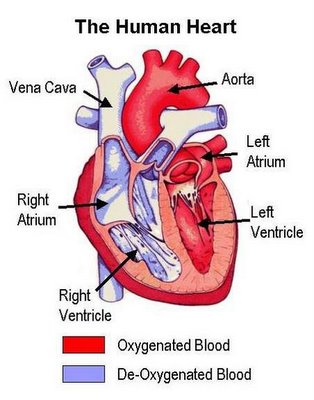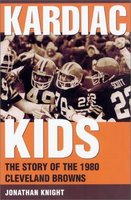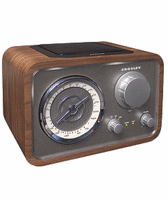Anatomy and Physiology of the Press Playing The Game Operation"

I found it so ironic that Hugh Hewitt's guest yesterday was QB Brain Sipe, the Head Heart Surgeon of the Kardiac Kids
on the day Cheney's friend, Harry Whittington had post gunshot Cardiac issues! Compliments to Dr. Hewitt on his measured and accurate reading of the man's Cardiac Status in the face of David Gregory's gunshot verbal blast!
In addition to Hugh Hewitt's other Blogospheric titles of Nobility already bestowed on him it is time for one more. As a member of the Medical Profession I dub this talk show host the "New Media's Doctor of Kardiology" in honor of this stellar interview with Brian Sipe, sound coverage of the VP's friend's Cardiac Status and his devotion to the Cleveland Browns' Kardiac Kids!
I've decided to weigh in and bring my medical training to bear on the Media's lame attempt to Diagnose and Practice Medicine. I will try to describe these issues in nonmedicald terms that perhaps will be understandable to the Has been Media reporters.
Gregory and the other over paid Washington Correspondents remind me of my first medical experience when as a child I played the Operation Game by Milton Bradley with my brothers and sister! Actually we were more reasonable than birdshot mouthed David Gregory ET. AL.
In Reuters it is reported that "Hospital officials said they knew that Whittington had some bird shot near his heart and that there was a chance it could move closer since scar tissue had not had time to harden and hold the pellet in place. After Whittington developed an irregular heartbeat, doctors performed a cardiac catheterization, in which a thin, flexible tube is inserted into the heart, to diagnose his condition, said Peter Banko, the administrator at the hospital. The shot was either touching or embedded in the heart muscle near the top chambers, called the atria, officials said. Two things resulted: It caused inflammation that pushed on the heart in a way to temporarily block blood flow, what the doctors called a "silent heart attack." This is not a traditional heart attack where an artery is blocked. They said Whittington's arteries, in fact, were healthy. It irritated the atria, caused an irregular heartbeat known as atrial fibrillation, which is not immediately life-threatening. But it must be treated because it can spur blood clots to form. Most cases can be corrected with medication. "
What does this mean?
- The heart which is made up of a contractile muscle tissue which also is electrical in nature is beating in a nonsynchronized fashion.
- There are 4 pumping chambers a right and left atria and right and left ventricle.
- The timing of the heart cells in the upper 2 small pumping chambers of the heart, known as the atria, is off and firing indiscriminately and with reckless abandon.
- The right atria receives unoxygenated blood from the large veins of the body.
- The misfiring muscle cells cause the atria to quiver in an uncoordinated manner which produces an impotent pumping action preventing the blood in the right atrium from moving completely into the right ventricle(lower chamber).
- As a result the volume of deoxygenated blood is lower than should be but as it is designed to do the large right ventricle pumps this attenuated amount into the lungs where gas exchange occurs and it is replenished with oxygenated.
- The quivering left atria receives this oxygenated blood but because of its impotent pumping action it delivers only a fraction of what it received to the left ventricle.
- This chamber which is the largest and most powerful of the 4 pumps the smaller than normal quantity it has received into the aorta.
- The first arteries to receive this blood from the aorta are the Coronaries which supply the heart tissue with the oxygen it needs.
- This lowered blood volume of the Coronaries is known as Hypo-perfusion.
- If this hypo-perfusion results in inadequate oxygenation of the heart tissue/cells a Myocardial Infarction occurs!
The description of this being a "Silent Infarction" means that it was not felt by the patient either because it was small or the patient suffers from Diabetes Mellitus, which results in damaged cardiac sensory nerves and consequently little if any pain is felt.
How do we know how much damage has occurred by a "Silent heart attack or MI"?(silent myocardial infarction occurring without pain or other symptoms; it may be recognized by electrographic or postmortem examination)
- The amount of Cardiac Enzymes released by damaged cell

- The most important ones are the Cardiac isoenzymes, CPK-MB and Troponin.
- These are proteins released by damaged muscle tissue by either a "Heart Attack" aka Myocardial Infarction, blunt trauma(gun shot wounds), infection(viral of bacterial) myopathy(muscle disease of many causes including autoimmune)
- There are specific and nonspecific changes in the EKG and changes from its baseline.
- echocardiogram,
- MUGA scan which measures the left ventricular ejection fraction (LVEF) is an excellent, and the most commonly used, measure of overall cardiac function. The ejection fraction is simply the proportion of blood that is expelled from the ventricle with each heart beat. So, for instance, if the left ventricle ejects 60% of its blood volume with each beat, the LVEF is 0.6. (A normal LVEF is 0.5 or greater.)
- thallium scan,
- diagnostic cardiac catheterization
- The MRI has the potential of replacing at least 4 other cardiac tests. MRI technology holds great promise in the evaluation and treatment of cardiac disease. The potential for MRI to accurately diagnose and direct the treatment of coronary artery disease before it becomes clinically apparent.
Silent Myocardial Ischemia(painless angina or pre-heart attack pain) in muscle tissue is rare
- Evidence of silent ischemia was found in only two (15 percent) of the subjects with unrecognized myocardial infarction and in two (8 percent) of the control group. The authors conclude that silent ischemia is uncommon in asymptomatic long-term survivors of unrecognized myocardial infarction and in matched controls without infarction but with otherwise similar coronary risk factors. They suggest that routine monitoring for silent ischemia in similar patients probably is not indicated. (American Heart Journal, December 1988, vol. 116, p. 1488.)
What Causes Atrial Fibrillation?
- These pumping chambers are wired with specialized conducting tissue and cells which reasembles electrical wiring and are known as AV nodes, Purkinje fibers and bundle of His.
- Abnormal Heart Conductive tissue causing faulty generation of current.
- Inflammation(Pericarditis) caused by foreign bodies(including bird shot), infection, electrolytes imbalances among other things.
Electrocution. - The incidence in persons aged 60-68 years is 1%.
- The incidence in persons older than 69 years is 5%.
Excerpted Articles that are excellent and linked from E-medicine
Penetrating Chest Injuries
Mechanism of injury
The mechanism of injury may be categorized as low, medium, or high velocity. Low-velocity injuries include impalement (egg, knife wounds), which disrupts only the structures penetrated. Medium-velocity injuries include bullet wounds from most types of handguns and air-powered pellet guns and are characterized by much less primary tissue destruction than wounds caused by high-velocity forces. High-velocity injuries include bullet wounds caused by rifles and wounds resulting from military weapons.
Shotgun injuries, despite being caused by medium-velocity projectiles, are sometimes included within management discussions for high-velocity projectile injuries. This inclusion is reasonable because of the kinetic energy transmitted to the surrounding tissue and subsequent cavitation, as described by the following equation in which KE is kinetic energy, M is mass, and V is velocity:
KE = ½ MV2
The amount of tissue damage is directly related to the amount of energy exchange between the penetrating object and the body part. The density of the tissue involved and the frontal area of the penetrating object are the important factors determining the rate of energy loss.
Blunt Chest Trauma
Synonyms and related keywords: motor vehicle accidents, MVAs, car accident, falls, blast injuries, blast injury, violence, chest wall fracture, dislocation, barotrauma, diaphragmatic injuries, diaphragmatic injury, pneumothorax, hemothorax, hemopneumothorax, broken rib, cracked rib, rib fracture, flail chest, clavicular fracture, clavicle fracture, sternoclavicular joint dislocation, sternal fracture, scapular fractures, scapula fracture, traumatic asphyxia, scapulothoracic dissociation, pulmonary contusion, parenchymal injuries, parenchymal injury, parenchyma injury, tracheal injuries, tracheal injury, trachea injury, bronchial injuries, esophageal injuries, esophageal injury, esophagus injury, myocardial injuries, myocardium injury, myocardial injury, chylothorax, blunt thoracic injury, chest trauma, thoracic trauma, chest injury, thoracic injury, broken collar bone, collar bone fracture, flail shoulder .
Cardiology is complicated and the diagnosis and treatment is still evolving . Veep Cheney also has a very bad heart and I'm sure this has not helped his baseline EKG. Remeber Coronary Artery Diaseas of the number 1 killer in the US by leagues!
- CAD remains the single leading cause of death among American men, killing more than 260,000 in the year 2000.
- Fast Facts:
The leading causes of death in the U.S. are heart disease, cancer and stroke.
Fast Facts:
The leading causes of death in the U.S. are heart disease, cancer and stroke.
I hope this is helpful.




3 Comments:
I would love to read the post but it is obscured by the placement over the dark part of the photo (great shot by the way). Could you re-post it centered over the snow. Thanks
Alan
thehorsedoctor.blogspot.com
Reader:
Highlight the text by holding down your left mouse button and dragging it. This will make it show up against the dark background.
Author:
Change font to something that will show up against black, Hot Pink!
Dr. Weldon,
I had the same issue with the text when I used Firefox. However, when I switched to Internet Explorer the text is on a white background and readable.
Post a Comment
<< Home